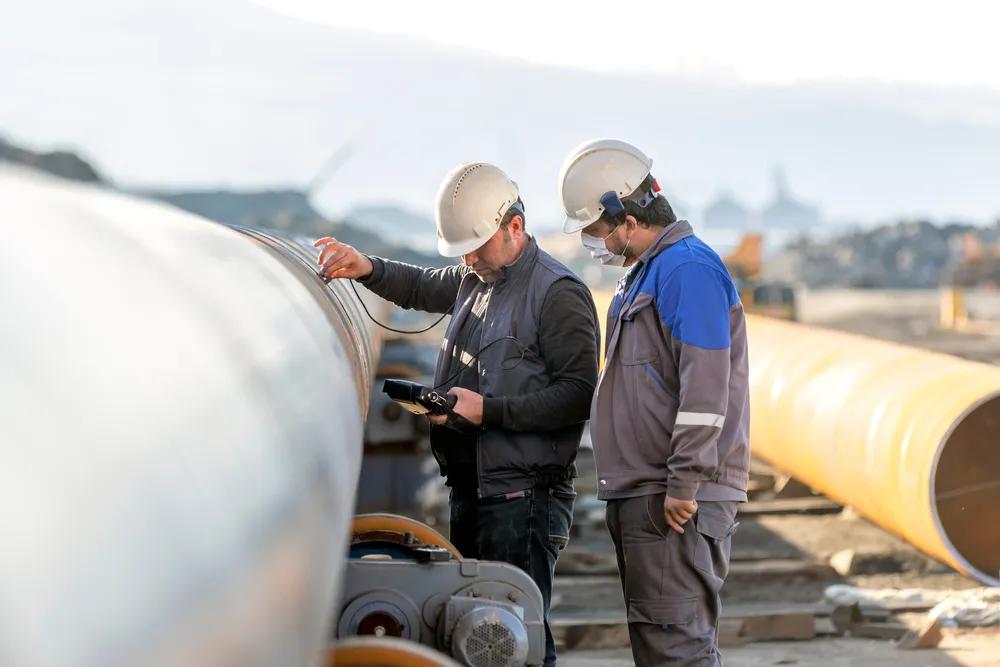Introduction:
Moving a rig is a crucial process in oil and gas exploration and involves various risks and challenges. Adequate protective plans must be implemented to mitigate these risks and safeguard both personnel and the environment. This Rig Movement and Safety Procedures workshop will focus on key aspects of hazard assessment, emergency planning, safety standards, and adherence to legal and regulatory frameworks.
Participants will practice emergency response through simulations and incident analysis to understand the necessity of championing safety management and internalizing a culture of safety. The workshop emphasizes theoretical understanding, ensuring participants acquire safe rig positioning procedures.
The nature of oil and gas rig operations encompasses various classifications of drilling rigs, each with specific mobility requirements. Participants will appreciate the characteristics of rigs associated with the oil and gas industry, factors dictating onboard safety, the use of safety gear, and training efficiency. This knowledge is vital for personnel involved in the operational aspects of rigging.
The workshop will emphasize essential safety measures necessary for maintaining a safe working environment. Participants will comprehend rig procedures related to transport processes, such as risk management, transportation plans, and emergency planning, along with detailed and efficient procedures for managing rig movements—from preparation to execution.
Objectives:
At the end of the Rig Movement and Safety Procedures workshop, participants will be able to:
- Appreciate the concept of rig movement and its significance in oil and gas operations.
- Recognize risks inherent in rig mobilization and demobilization.
- Observe safety measures to reduce or control associated risks.
- Adhere to established laws, regulations, and safety standards in the industry.
- Formulate detailed plans for rig movements, considering safety and operational factors.
- Analyze rig movement processes in terms of productivity and efficiency.
- Act as change agents that nurture safety within their organizations.
Training Methodology:
- Identification of hazards
- Simulation of emergency response situations
- Execution of safety measures
- Scenario-based role play
- Workshop activities
- Compliance assessment
- Hazard protection and theoretical training simulations
Course Outline:
Unit 1: Introduction to Rig Movement
- Definition of rig mobilization and demobilization and their importance
- Various types of drilling rigs and their mobility requirements
- Accident statistics in the industry concerning rig movement
- Overview of safety acts and standards set forth for the industry
- Historical appraisal of changes influencing safety practices
Unit 2: Hazard Identification and Risk Assessment
- Scope of risk in rig change management
- Successful methods for hazard identification
- Assessment of threats during rig changes
- Steps for ranking identified risks
- Examination of historical deformities in rig change processes
Unit 3: Safety Procedures and Protocols
- Key components of a practical emergency response plan
- Fire risk management during rig movements
- Procedures for preparing and implementing emergency shutdowns of rig equipment
- HSE actions for safe rig evacuation
- Practice of pre-prepared emergency drills
Unit 4: Rig Movement Planning
- Aspects of preparing a plan for rig movement
- Legal considerations for rig movement planning
- Coordination with local authorities for approvals
- Checklists and paperwork for rig up and rig down
- Designing a rig movement template as practical exercise
Unit 5: On-site Safety Practices
- Crew functions and obligations during rig movement
- Regulatory mechanisms during rig mobilization
- Handling scenarios that compromise planned safety
- Safety drills during rig movement (theoretical)
- Real-time hazard management: case studies and discussions
Unit 6: Compliance and Auditing
- Improving regulatory compliance
- Tools, procedures, and benefits of internal safety audits
- External audits and evaluations
- Continuous improvement action plans for safety
- Adoption of best practices and industry norms
Unit 7: Safety Leadership and Culture
- Leadership's role in fostering a safety culture
- Encouraging employees to adopt and implement safety measures
- Incident reporting and communication without fear
- Planning for compliance with changes related to safety
- Ongoing internal education regarding safety during rig movement


















